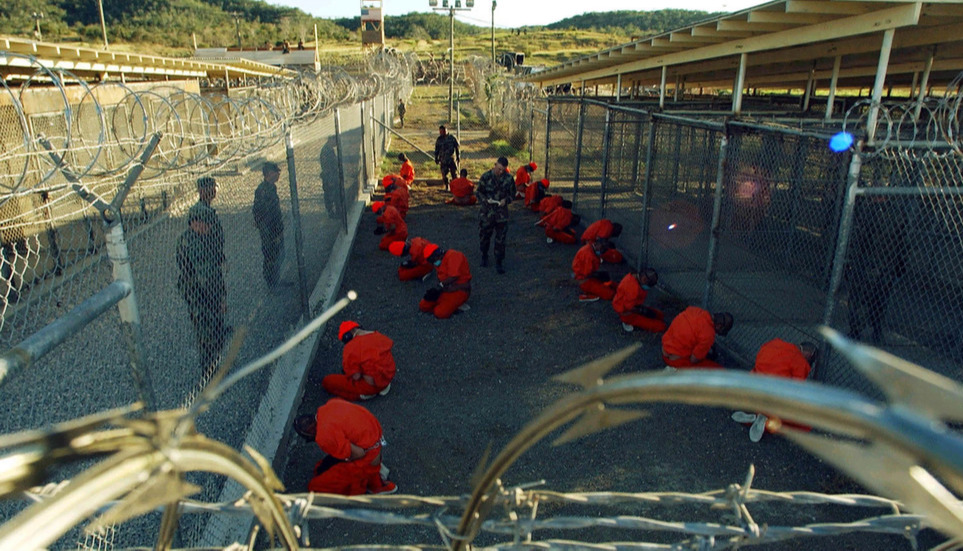
Detainees in orange jumpsuits sit in a holding area Naval Base Guantanamo Bay. (Photo: Reuters)
Washington, May 19 (RHC)-- A man from Pakistan who has spent the better part of two decades imprisoned at the controversial U.S. detention facility at Guantanamo Bay has been cleared for release, his lawyer has said.
Saifullah Paracha has been imprisoned for more than 16 years on suspicion of having ties to Al-Qaeda. However, his captors never charged him with a crime.
Paracha was a wealthy businessman in Pakistan who owned property in New York City. But his life was turned upside down after U.S. authorities alleged he was an Al-Qaeda “facilitator” who helped two conspirators in the September 11 terrorist attacks with a financial transaction. Paracha has maintained that he was unaware of their affiliation with the terrorist group. The U.S. captured him in Thailand in 2003 and he was transferred to Guantanamo Bay a year later.
In November, his case was brought before a prisoner review board, his eighth appearance before the body. According to his lawyer, Shelby Sullivan-Bennis, the U.S. military has now finally agreed to release him but did not give specific reasoning for the decision, stating only that Paracha is “not a continuing threat” to the United States. Two other men were also approved for release.
The detainee’s failing health, as well as terrorism-related charges brought against his son that were thrown out last year, may have contributed to the decision to let Pascha go, his attorney speculated at the time of the hearing.
However, the decision does not mean Paracha will be freed immediately. There are a number of hurdles that lie ahead, including the matter of where he will be repatriated to. Sullivan-Bennis said Pakistan was ready to accept him and that there were no impediments blocking his return.
Apart from being the oldest detainee, he is also one of the last remaining prisoners at Guantanamo. Currently, the facility holds 40 prisoners, down from a peak of almost 700 in 2003.
In February, the Biden administration vowed to carry out a “robust review” of the Guantanamo Bay prison, with the aim of closing the detention center by the end of his term. The policy marked a sharp U-turn from former president Donald Trump’s stance on the prison. While campaigning in 2016, Trump promised voters that he would “load up” the facility with “some bad dudes.”
Shuttering the highly controversial prison has proven to be no simple task. After winning the White House in 2008, Barack Obama issued an executive order calling for the facility to be shut within a year. The initiative was stonewalled by the Pentagon and Obama later signed a National Defense Authorization bill that placed restrictions on prisoner transfers from the site, effectively nullifying his own order. But he did, however, reduce the inmate population.
The CIA has been accused of using the offshore prison to employ brutal ‘enhanced interrogation techniques,’ which constitute torture. These techniques were officially banned by Obama in 2009, but they have persisted well into 2017 with impunity for perpetrators, according to the UN special rapporteur on torture Nils Melzer.
The camp was first opened by former president George W. Bush as part of the ‘War on Terror,’ in order to hold suspected terrorists captured overseas after the September 11 attack in 2001. Many prisoners resorted to hunger strikes in protest of their detention, the conditions at the facility and the way they were treated. In August 2013, the strike peaked with 37 detainees on hunger strikes after nearly seven months without food.

